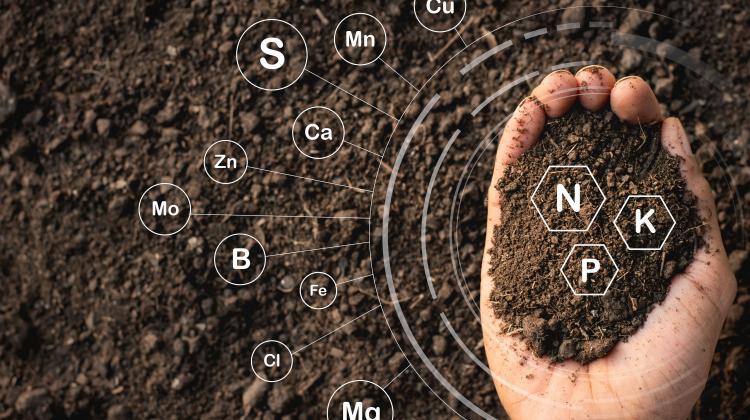Scientists investigate whether soil of Małopolska landscape parks is PAH-free
 Credit: Adobe Stock
Credit: Adobe Stock
The analysis of the content of 10 different organic compounds belonging to polycyclic aromatic hydrocarbons (PAH) in soils taken from protected areas (landscape parks in the Małopolska region) revealed that in a quarter of the tested samples the permissible levels were exceeded, causing a risk of particular importance for the protection of the soil surface.
This phenomenon was noticed primarily in the vicinity of communication routes, mainly local roads running through landscape parks. It is mainly the result of the impact of transport, and to a lesser extent also industry.
Researchers from the Department of Environmental Protection of the AGH University of Science and Technology in Kraków published a paper in Scientific Reports (https://doi.org/10.1038/s41598-023-28726-6), in which they presented the problem of soil contamination with PAHs in selected protected areas located in the Małopolska region. It turned out that there were places where the permissible PAH content in soils was exceeded. According to the scientists, there is a need to develop new legal solutions helpful for entities dealing with protective activities, which will allow to improve the methods of assessing the environmental condition of environmentally valuable areas, and in the future also facilitate their remediation.
The team led by Dr. Alicja Kicińska, a professor at AGH UST, collected surface soil samples from 5 landscape parks and 5 nature reserves located in the Małopolska region, from a total of 39 different locations. The aim of their research was to determine the content and assess the degree of environmental pollution with the 10 most common PAHs within valuable natural areas. The scientists wanted to verify whether the current monitoring and assessment of such threats in protected areas was sufficient. 'The research was mainly cognitive, because in our opinion there is a noticeable gap in the detailed recognition of the state of the environment in relation to protected areas in Poland', emphasize the authors of the publication 'Anthropogenic impact on soils of protected areas - example of PAHs'.
Polycyclic aromatic hydrocarbons are a group of organic compounds that have at least two aromatic rings. They include about 200 different substances, some of them suspected or proven to be genotoxic, mutagenic and carcinogenic.
PAHs have always been present in the environment, but human activity has significantly increased their amount. They are formed during the incomplete combustion of organic matter, which can be both natural (during forest fires or volcanic activity) and caused by human activity. In the latter case, the largest amounts of PAHs are released during the combustion of coal and crude oil for municipal and industrial purposes (transport, i.e. car exhaust fumes, heating furnaces, all other industrial furnaces). Substances from this group are also released when smoking cigarettes and smoking and grilling food.
Due to their prevalence in the environment, polycyclic aromatic hydrocarbons are a serious threat to human health and to agriculture. In the 1970s, 16 compounds from this group were included in the list of priority pollutants. In combination with water vapour suspended in the air, PAHs become components of smog. They can also contaminate soil and water, especially surface water. Due to their high bioavailability and bioabsorbability, PAHs easily get into plants, animals and the human body. The available literature indicates that today exposure to them is continuous and intense.
Benzo[a]pyrene, which has the strongest carcinogenic effect, is considered to be the most dangerous PAH. Numerous scientific publications indicate that there is no exposure threshold, which means that exposure to any concentration of benzo[a]pyrene can cause cancer. Polycyclic aromatic hydrocarbons are also associated with the risk of premature birth and foetal malformations.
As part of their latest research, the scientists determined the content of anthracene, benzo(a)pyrene, benzo(a)anthracene, benzo(b)fluoranthene, benzo(k)fluoranthene, benzo(g,h,i)perylene, chrysene , dibenzo(a,h)anthracene, indene(1,2,3-cd)pyrene and naphthalene in the soil samples. Analysis of the composition revealed that some of the collected material did indeed exceed the environmental limits set for individual hydrocarbons.
'These levels ranged from less than 0.005 to 6.34 mg/kg, which, compared to the applicable legal regulations, showed that the permissible contents were exceeded in 23 percent of analyzed samples', says Dr. Alicja Kicińska.
'The largest excess amounts concerned the content of benzo(b)fluoranthene and benzo(a)pyrene and we found them in the material collected near traffic routes, mainly local ones', she adds. 'However, we did not find any exceeded limits set for naphthalene and anthracene'.
Increased or exceeded PAH content, albeit to a lesser extent, was also found in the vicinity of large industrial plants located in the border zones of individual landscape parks. This indicates the regional nature of the spread of this type of pollution.
'Conducting scientific research, including the recently published study, proves that both the scientific community and institutions dealing with environmental protection (…) see the need to supplement research tools supporting administrative decision-making processes. This may contribute to a better determination of conservation objectives in landscape parks, existing threats, as well as a more accurate formulation of the scope of protective measures', says Dr. Alicja Kicińska.
Based on the results, the scientist and her colleagues suggest that it is worth considering to introduce stricter legal standards regarding the substances in question for the most valuable natural areas in Poland, including nature reserves and landscape parks.
'In the case of carcinogenic persistent organic pollutants, it is advisable to create more detailed regulations, taking into account the risks associated with potential and actual soil contamination (including PAH contamination), as well as continuous monitoring in protected areas, especially in the vicinity of potential pollution emitters', believes the expert from AGH UST. 'It is also worth considering the implementation of a new pollution assessment system, one that would enable area classification taking into account neighbouring areas and the influx of pollutants from these areas'.
However, according to Dr. Alicja Kicińska, in addition to the regulations, their enforcement is also important.
'Considering the scientifically proven negative impact of polycyclic aromatic hydrocarbons on human health and other elements of the environment, it is also necessary to take action to reduce the excessive levels of these pollutants through soil remediation (actions aimed at reducing pollution of the soil surface - PAP) or phytoremediation (similar activities using plants in the treatment process), as well as effective reduction of emissions', concludes the author of the paper.
The researcher adds that because Polish protected areas are very diverse geographically and environmentally, and many different factors affect the transport and distribution of pollutants in the environment - it cannot be said that the problem of soil contamination by PAHs has increased in general throughout Poland. 'Individual protected areas, in addition to their specificity, also have specific neighbourhoods and locations. Just like any village or town. That is why each of these locations should be considered separately and with appropriate knowledge, related not only to environmental geochemistry, in order to assess the condition of the environment', the expert explains. (PAP)
PAP - Science in Poland, Katarzyna Czechowicz
kap/ zan/ kap/
tr. RL
Przed dodaniem komentarza prosimy o zapoznanie z Regulaminem forum serwisu Nauka w Polsce.



















